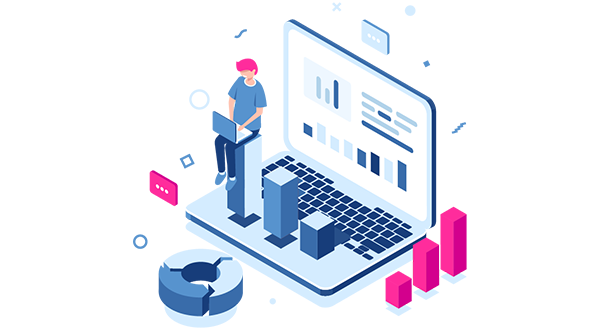

mLogica Thought Leaders: Successful Mainframe Cloud Migrations Start with a Focused Assessment

Greg Ogburn, mLogica Senior Modernization Solution Architect
Every day the burden of legacy mainframes becomes heavier. As customers and internal stakeholders demand more innovation and agility, decades-old mainframes offer greater inefficiency, operational hurdles and outdated technology.
These persistent issues hinder private and public sector organizations from keeping pace with current needs, much less evolving demands and future goals. Moreover, as technology reaches obsolescence, operational issues, staffing challenges and financial burdens, including infrastructure and licensing costs, only escalate.
Digital transformation offers a path to modernize mainframe systems and unlock new possibilities and cloud migration is the first step towards this goal. However, a successful mainframe modernization hinges on a comprehensive assessment of the existing system to determine all technologies that have accrued over the decades, their interdependencies and suitability for cloud migration. Since even relatively small system components can disrupt and even derail migrations, attempting to modernize without a comprehensive assessment of the entire source environment is likely to doom the entire initiative.
Comprehensive Assessment: The Path to a Smooth Transition
A comprehensive assessment of the source system serves as the foundation for any successful digital transformation initiative, particularly for decades-old mainframe environments, providing visibility into the entire ecosystem, including interdependencies, risks and challenges. By identifying and proactively addressing these challenges during the assessment phase, companies minimize the likelihood of failure, optimize the migration process and significantly reduce risk.
But how do you guarantee your mainframe environment assessment is performed accurately and cost-effectively? At mLogica, our LIBER*M Mainframe Modernization Suite offers an automated discovery and assessment module, LIBER*DAHLIA, that delivers a highly detailed, targeted analysis of the entire legacy application environment.
Key Considerations for a Focused Assessment
A focused assessment entails a holistic examination of all facets of an organization's existing IT environment. The inventory and analysis it generates allows the migration team to develop a comprehensive work scope, including application portfolio analysis, infrastructure evaluation and performance benchmarking. Key considerations during this assessment process include:
Business Goals: Digital transformation goals vary across private and public sector organizations. Large enterprises and agencies might prioritize enterprise-scale computing, while smaller organizations may focus on cost-efficiency and reduced reliance on costly legacy systems. The assessment helps guide the migration toward these overarching business objectives.
Cloud Readiness: Not all components in a legacy system will be compatible with cloud architecture, therefore assessing cloud readiness of all technologies, applications, databases and tools is crucial for a successful migration.
Potential Challenges: Data inconsistencies, security gaps and skill set shortages are potential hurdles that the assessment process must also identify. Early detection helps mitigate risks that could disrupt the project.
Resource Requirements: Understanding current resource demand is critical for optimizing cloud migration. Benchmarking performance baselines for applications and workloads allows the migration team to accurately estimate the resources, including CPU power, storage and more that will be needed to achieve desired performance levels in the cloud.
The Advantages of Leveraging Automation During Assessment
An automated assessment tool, like mLogica’s LIBER*DAHLIA, accelerates and optimizes the analysis phase, generating granular reports that aid in the development of a detailed modernization roadmap while virtually eliminating human error. Such reports facilitate:
Dependency Mapping: A complete analysis of the interrelationships among all technologies, applications, databases and tools, including potential challenges, helps to ensure there are no last-minute surprises.
Performance Analysis: A comprehensive analysis of current workloads enables companies to benchmark resource demand in the cloud to ensure optimal performance at go-live.
Cost Projections: Since an assessment provides visibility into a company’s complete IT inventory, it helps clarify potential cloud migration costs, allowing private and public sector organizations to create a realistic budget and avoid overruns.
The Last Mile Challenge: Avoiding Hidden Obstacles
Legacy and mainframe systems frequently contain "exotic" or niche technologies that, if overlooked during assessment, can create significant challenges and complexities. For instance, mainframe modernizations often miss crucial technologies such as Easytrieve, Assembler, PL/I, Telon, QUICKJOB and more. A thorough discovery and assessment of these technologies and their roles is essential to avoid the costly project delays we’ve dubbed The Last Mile Challenge.
Building Your Assessment Team
A successful assessment is a collaborative effort requiring a team that brings diverse expertise, including:
IT specialists: Solution architects and experts in cloud migration and legacy technology should form the core of the assessment team, playing a vital role in analyzing applications and infrastructure and developing migration strategies.
Business leaders and stakeholders: Business leaders and internal stakeholders should be involved throughout the assessment process to ensure the migration roadmap and end state system align with the short- and long-term goals of the organization.
Security professionals: Data security experts play a critical role in performing risk assessments to identify security gaps and compliance issues, as well as to develop vital cloud governance protocols for the destination platform.
The Roadmap to Success: Leveraging the Assessment
The insights generated via a comprehensive, automated assessment are essential for developing an overall digital transformation strategy, including:
Migration Approach: A comprehensive assessment allows your team to determine whether to refactor, rebuild or replace individual technologies for optimal performance in the cloud.
Migration Prioritization: A good assessment simplifies the order of business priority of each technology, application, database and tool, enabling an optimized, phased migration strategy.
An In-depth Plan: A migration plan is critical for a successful transition. It should encompass the overall strategy, detailed phases, key timelines, resource allocation and contingency provisions.
Automating Your Assessment is the Key to Cloud Migration Success
A comprehensive, automated assessment, such as mLogica’s LIBER*DAHLIA provides, is the linchpin of a successful cloud migration. By providing deep insights into your existing systems, it allows you to identify potential challenges, assemble a team with the needed skill sets and create a failsafe migration roadmap. This strategic preparation minimizes costly missteps during project execution, helps unlock the full potential of your new cloud environment and accelerates time to value.








































